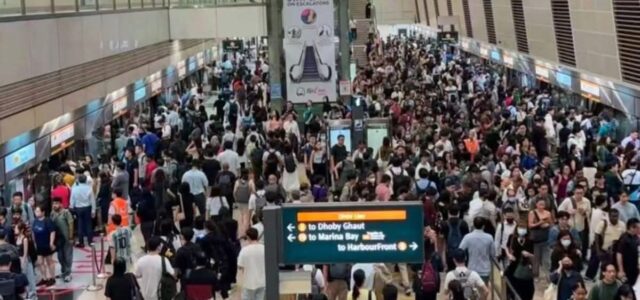MRT reliability dips to five-year low, raising questions on system resilience
mrt-reliability-dips-to-five-year-low-raising-questions-on-system-resilience
#MRT #reliability #dips #fiveyear #raising #questions #system #resilience,
SINGAPORE: For many regular commuters, MRT breakdowns have long been part of the daily gamble of getting to work or school on time, and now, fresh figures show that the network’s reliability has slipped to its weakest level in five years.
According to the Land Transport Authority’s (LTA) latest rail service reliability report, Singapore’s MRT trains clocked an average of 1.6 million train-km between major delays, the lowest since 2020, when the figure stood at 1.45 million train-km, as reported by CNA.
LTA sets a target of 1 million train-km between delays, meaning the system is still above its benchmark. However, for those who have spent mornings stranded on crowded platforms, numbers alone don’t capture the mounting frustration.
Big drops for key lines
The latest report paints a mixed picture. According to CNA, the Downtown Line saw the steepest decline, tumbling from 8.13 million train-km in 2024 to 4.12 million. The North-South Line, a vital artery for thousands who travel daily between Woodlands and the city, halved its reliability from about 2.49 million to 1.24 million train-km, which is its lowest since 2020.
The East-West Line, already notorious among commuters for ageing infrastructure and repeated breakdowns, slipped again to 1.44 million train-km, compared with 1.69 million last year.
On the flip side, there was some good news. The North-East Line inched up slightly to 4.23 million train-km, while the Circle Line improved to 1.07 million from 919,000. The Thomson-East Coast Line was excluded from the report as it is not yet fully open.
Recent disruptions still fresh in memory
The fall in reliability comes at a time when there have been several notable disruptions. The most severe was the six-day East-West Line disruption in September 2024. This not only caused derailment of travel plans for thousands of Singaporeans, but also resulted in a S$3 million fine for SMRT, as reported by CNA.
For this year, multiple incidents of disruptions have also been reported. In February, an engineering vehicle broke down at Bishan depot, crippling the North-South Line for an entire day. Within the same week, signalling faults on both the North-East and Circle Lines led to lengthy morning delays. Then, a few weeks later, on Mar 5, a train fault on the Circle Line left passengers stuck between Promenade and Serangoon.
While the figures measure distance travelled before delays, they do not reflect how severe or disruptive those incidents are. For commuters, the memory of missing an important meeting or turning up late for class often lingers far longer than a data point.
Frustration spilling over
Unsurprisingly, the report sparked strong reactions online. “More maintenance is needed to prevent the train from not working,” one commuter wrote on Facebook, echoing a sentiment that the system’s upkeep may not be keeping pace with its usage.
Another social media user put it bluntly: “Fare increases should not therefore be increased. Potong from the CEO and the top management. No more excuses for the inconveniences for us commuters,” their comment stated.
Others questioned the push for more people to rely on public transport. “They want us to take public transport and yet the reliability is so poor,” one comment read. Another alleged that corners may have been cut: “They cut down on maintenance for sure, or the maintenance department cut down on quality.”
The tone of these responses reflects a broader unease: while Singapore’s system still outperforms global peers such as New York and Hong Kong on some metrics, passengers here hold it to a far higher standard, one shaped by years of being told that public transport should be the default choice.
Looking ahead
Compared internationally, Singapore’s MRT still fares well. LTA noted that trains here ran for 7.7 million car-km before encountering a delay, compared with Hong Kong’s 4.29 million and New York’s 187,000, as reported by CNA, yet such comparisons do little to soothe the commuters left waiting on a crowded platform during rush hour.
As Singapore looks to expand and age-proof its rail network, the challenge ahead is clear: maintaining not just strong numbers on paper, but also restoring the confidence of everyday riders who want punctuality and consistency above all else.
At the end of the day, the MRT has played a big role in Singapore’s public transport system. With its reliability dipping to its lowest in half a decade, both its structural resilience and the people’s patience are being put to the test.
Read also: Shuttle bus 37 to skip Nicoll Highway stop on Sep 7 for Got To Ride 2025
